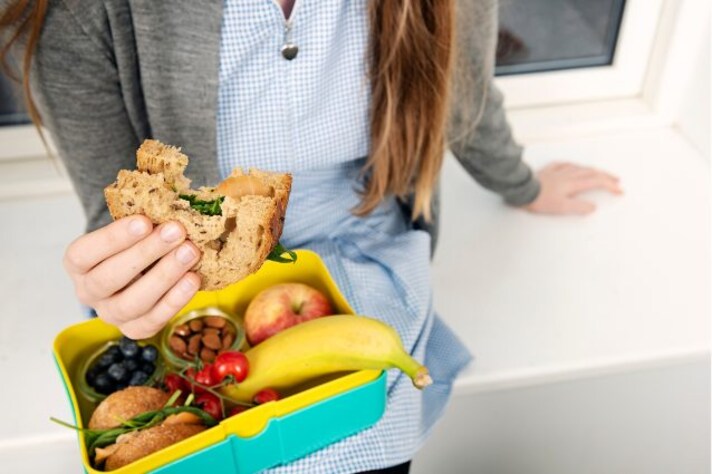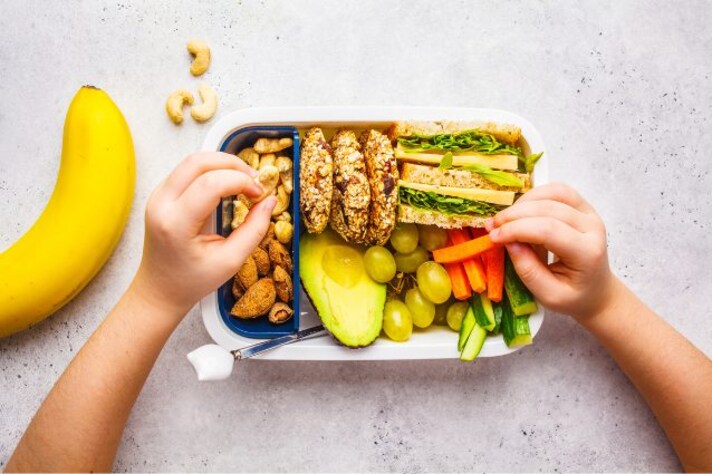
With school starting (or already in full swing), parents everywhere are facing one of the most daunting tasks of the day: packing the perfect school lunch. It’s not just about throwing together something quick; it’s about crafting a meal that’s colorful, varied, nutritious, and—most importantly—something your child will actually eat. The stakes are high when you’re bleary-eyed at 6 a.m., trying to balance all these factors in a small lunch box that needs to excite your child for the next seven or eight months. How do you make it happen? Don’t worry—we’ve got you covered with some of the best tips to make lunch-packing a breeze.
What's The Best Way to Build a Lunch Box?
The first step to mastering school lunch prep is understanding how to structure a balanced and appealing lunch box. A good lunch should include a mix of protein, carbohydrates, fruits, vegetables, and a little treat to keep things exciting. Protein is essential for keeping your child full and focused throughout the day—think lean meats, cheese, or plant-based options like hummus or tofu. Carbohydrates provide energy, so whole grains like brown rice, whole wheat bread, or pasta are ideal. Fruits and vegetables add color, vitamins, and fiber, making the meal visually appealing and nutritious. Finally, a small treat, like a piece of dark chocolate or a homemade cookie, adds that fun factor kids look forward to.
But balance isn’t just about nutrition; it’s about variety, too. Kids get bored easily, so mix things up with different textures, colors, and flavors. If Monday’s lunch is a turkey sandwich with carrot sticks and apple slices, Tuesday might feature a pasta salad with cherry tomatoes, cucumber, and a side of grapes. By rotating ingredients and presentation, you’ll keep the lunch box exciting and ensure your child looks forward to their meal each day.

1. Get Ahead the Night Before
One of the best ways to make lunch packing easier is to do as much prep work as possible the night before. Mornings are hectic, and anything that saves time is a win. Wash and cut fruits and vegetables in advance, portion out snacks, and even pre-make sandwiches or wraps that will hold up well overnight. If you’re really ambitious, plan the entire week’s lunches on Sunday, prepping ingredients in bulk and storing them in airtight containers. This way, you can quickly assemble lunches each morning without feeling rushed or stressed.
2. Choose Your Food Smartly
When it comes to choosing the right foods for your child’s lunch, freshness is key. Opt for fruits and vegetables that stay crisp and appealing throughout the day, like apple slices (soaked in lemon water to prevent browning), carrot sticks, or bell pepper strips. For sandwiches, consider using whole grain bread that won’t get soggy, and spread a thin layer of butter or cream cheese on the bread before adding fillings to create a moisture barrier.
For protein, think beyond the classic deli meats. Hard-boiled eggs, leftover grilled chicken, or a small container of yogurt (with an ice pack to keep it cool) are great options. Incorporating a variety of proteins not only keeps things interesting but also ensures your child gets the nutrients they need to stay energized and focused.

3. Make Sure to Keep The Lunch Box Fresh or Hot
Packing a lunch that stays fresh until noon requires the right tools. Invest in a good-quality insulated lunch box and reusable ice packs. These will keep perishable items like yogurt, cheese, or sliced meats at a safe temperature. For foods that need to stay warm, like soup or pasta, use a thermos. It’s also helpful to pack foods in separate compartments or containers to prevent sogginess and keep flavors from mingling—no one likes a soggy sandwich or fruit that tastes like pickles!
Another pro tip is to pack food in a way that’s easy for your child to eat. Pre-cut fruit, bite-sized veggies, and small sandwiches or wraps are not only more appealing but also more manageable for little hands. When the food is easy to eat, it’s more likely to get eaten, which is, after all, the goal!
4. Keep All Aspects Varied
The secret to a successful school lunch is variety—not just in the food, but in the presentation. Bento boxes, for example, are a fantastic way to make lunch more exciting. These compartmentalized boxes allow you to pack a little bit of everything without it all mixing together. You can include a dip for veggies, a mix of colorful fruits, and a small treat, all neatly arranged to tempt your child’s taste buds.

Get creative with the presentation: use cookie cutters to shape sandwiches or fruits into fun shapes, add a note or a fun sticker to brighten their day, or try themed lunches based on your child’s interests (think “Taco Tuesday” or a “Rainbow” lunch featuring foods in different colors). When lunch feels special and personalized, your child is more likely to dig in with enthusiasm.
5. Involve Your Child in The Meal Prepping
Finally, don’t forget to involve your child in the lunch-packing process. Kids are more likely to eat what they’ve helped choose or prepare. Let them pick out fruits or snacks at the grocery store, or give them a say in what goes into their lunch box the night before. This not only teaches them about balanced eating but also makes them feel more invested in their meal. Plus, it’s a great opportunity for you to sneak in some healthy options while still giving them a sense of control.
;Resize,width=767;)
